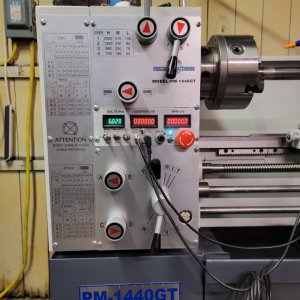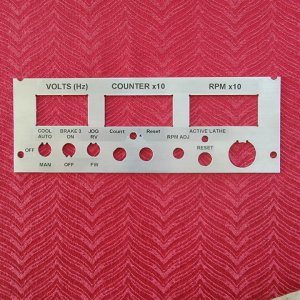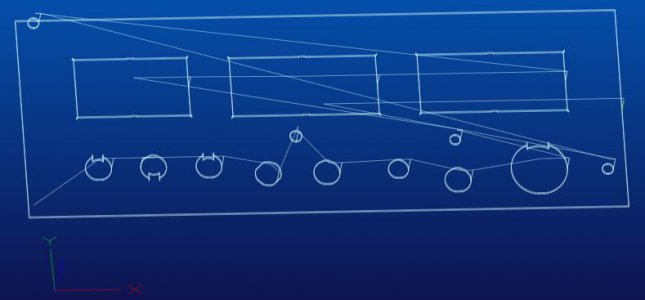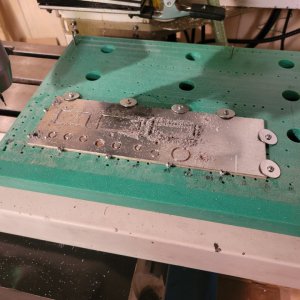@Provincial
I wanted 16 wires in a shielded cable for my 1440GT conversion. But could not find it in a package that would fit through the hole in the side of my lathe. I settled on two cables with, 20AWG stranded, 8+ground+shields and they slipped in nicely. I agree with Mark, the 24 gauge is to fragile. Even if it does not break it does not work all that well at the end connections. I provided a link to the cables I purchased in the parts list of my conversion post. See the Part 2 document. These cables are made for the marine environment so should hold up well. I spend quite a bit of time analyzing them and their metallic structures before I installed them. I use elevator style screw connectors and they clamp well. Since the individual wire have colors I also stripped the outer cover off so I would have colored wires to use. I found that I could also Ferrule crimp them nicely to go into either the elevator connectors or the VFD inputs.
" 20/8 AWG Round Signal Tinned Copper Marine Wire - Grade 8 Conductor Shielded Signal Cable - White Jacket, Black/Red/Green/Blue/Brown/Orange/Purple/Yellow - Made in USA "
I wanted 16 wires in a shielded cable for my 1440GT conversion. But could not find it in a package that would fit through the hole in the side of my lathe. I settled on two cables with, 20AWG stranded, 8+ground+shields and they slipped in nicely. I agree with Mark, the 24 gauge is to fragile. Even if it does not break it does not work all that well at the end connections. I provided a link to the cables I purchased in the parts list of my conversion post. See the Part 2 document. These cables are made for the marine environment so should hold up well. I spend quite a bit of time analyzing them and their metallic structures before I installed them. I use elevator style screw connectors and they clamp well. Since the individual wire have colors I also stripped the outer cover off so I would have colored wires to use. I found that I could also Ferrule crimp them nicely to go into either the elevator connectors or the VFD inputs.
I think this may have been the product, but I know that I purchase a 50' roll which they no longer seem to offer.VFD conversion using solid state electronic components.
" 20/8 AWG Round Signal Tinned Copper Marine Wire - Grade 8 Conductor Shielded Signal Cable - White Jacket, Black/Red/Green/Blue/Brown/Orange/Purple/Yellow - Made in USA "





